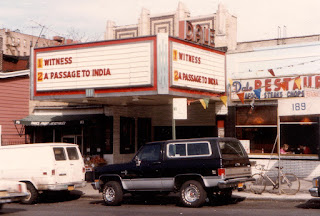There are memories and there are alternative
memories—fiction. Since we live in an age of alternative facts, I consider
alternative memories a natural offshoot. Not too long ago, I attended a
gathering and chatted with a ghost from my past. He was an affable enough
fellow, but he loved nothing more than to hold court and be the center of
attention—the type of guy who is hard to stomach for any extended period of
time. What annoyed me most of all was not so much that he was a blowhard, but
that his recollections of the past frequently veered into fantasy.
I appreciate the fact that memory is a tricky thing—not an
exact science. My recollections of the past don’t always jibe with others’. But
there are certain memories—historical claims—that the aforementioned ghost from
my past spewed that were patently false. They were downright slanderous to a
couple of people from the old neighborhood who are long dead and buried.
Unfortunately, in a small room sans an escape hatch other than a visit to the
bathroom, listening to alternative memories was the price the rest of us on
hand had to pay.
And now for something completely different: a memory rooted
in reality plus a little science. For every action there is an equal and
opposite reaction: Saw that my maternal grandparents’ old home on Miller
Street in Bangor, Pennsylvania was for sale, which resurrected a traumatic
experience. Arriving from the Bronx for a visit some forty-five years ago, I
was carrying my Matchbox case full of cars to the house. In what was most
unfortunate timing, the case snapped open in the street—directly above a sewer
grating—and several cars from my impressive collection rolled out of the case
into it. Visible to the eye, they remained for the entire world to see until
the next heavy rain.
This painful memory, nevertheless, prompted me to search the
Internet for vintage Matchbox cars and purchase a few, including a few of my
all-time favorites: the Greyhound bus, station wagon ambulance, and Studebaker
wagon. Back then, those of us with matchbox cars played with them until they
were scratched and tattered. These die-cast gems were originally manufactured
by an English toymaker—Lesney—with great attention to detail. The Studebaker
wagon, for instance, had a retractable roof in its back. In a play moment with
my younger brother—in the great outdoors of Bangor—it’s the car we deemed to
belong to “Yia Yia.” Yia Yia, by the way, was our next-door neighbor in the
Bronx—an elderly Greek woman and grandmother—who didn’t drive in real life. And
that’s not an alternative memory. But as to who were the “owners” of my other
matchbox vehicles in that playtime a long time ago, I don’t remember and won’t
create an alternate reality. I’ll leave that kind of thing to that ghost from
my past and his epigones in the alternative memory fraternity.



No comments:
Post a Comment
Note: Only a member of this blog may post a comment.